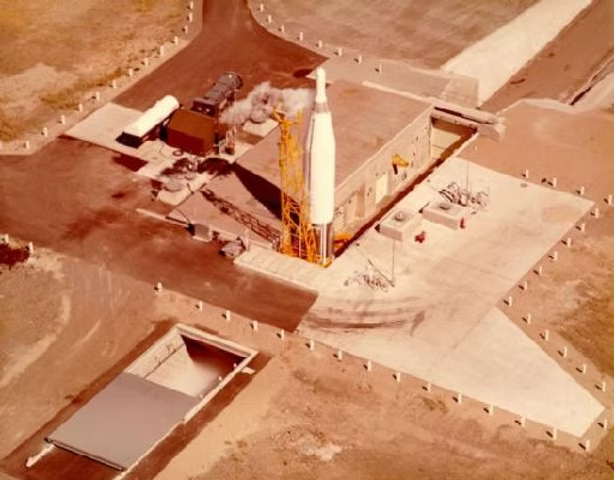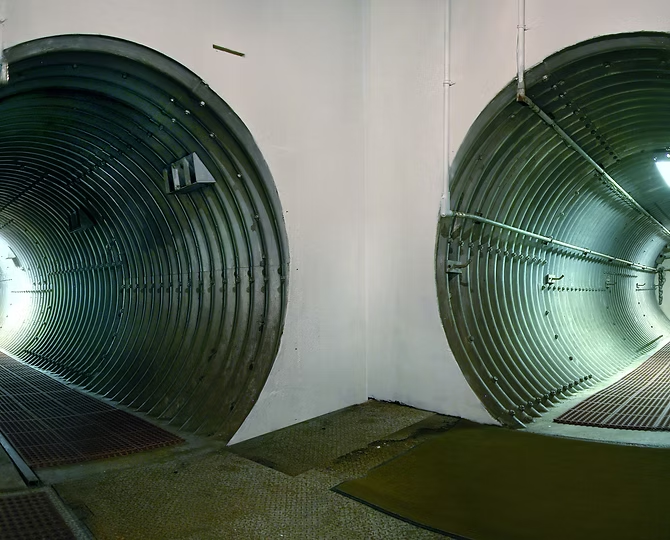Coffin-Style Launcher
Only 27 Atlas E sites were built, each at cost of $3.3 million in 1960"s dollars for the structure only. In today's dollars, that would be close to $30 Million dollars! (The entire site construction cost was around $25 million.) Activated in 1961, and on-line during the Cuban Missile Crisis, they were decommissioned only four years later in 1965. They held an ICBM (Intercontinental Ballistic Missile) with a 4 megaton nuclear warhead. The Atlas E is semi-hardened, designed to withstand a 1 megaton air-burst from a distance of 1.6 miles.
General Layout & Features
The base consists of two main underground structures connected by a 120' long tunnel. The underground structures are constructed of heavy, re-bar reinforced concrete with 18" thick ceilings and walls and a 3' layer of earth covering them. There is approximately 15,000 square feet of floor space with minimal stairs.
Launch Control Building
This building is entirely underground and measures 54' x 90' (4,900 plus square feet of floor space), with a ceiling height of 15'. There is an escape hatch and an equipment "plug" that can be removed and replaced with a skylight. Air ventilation shafts and a sewage pump are part of the original design.
Launch Service Building (LSB)
Launch Service Building (LSB) is actually a set of three large rooms: The Launch Service Equipment Area is accessed by the tunnel from the LCB. It is 45'x104' with 14.5' ceilings. It has drains and two escape hatches. The Missile Bay itself is approximately 30' w x 100' l with 20' ceiling. It lies to the east of the LSB and had drive-in access via a 47-ton, motor-operated, rolling blast door (20'w x 18't). These doors may or may not be in-place or operable today. Originally, the missile was backed into the missile bay through this door and stored horizontally. The missile bay was covered by a 400-ton, motor-operated door that would be rolled horizontally on tracks to open the missile bay (shown at left). Depending on the site, this door may or may not be in place, and is most likely not operable. At launch, the missile was erected to vertical with a large crane. Beneath the missile, towards the rear of the Missile Bay, is a large blast pit, which redirects the fiery rocket blast outside of the underground structure. The easternmost room in the LSB is the Oxygen Room, where liquid oxygen was stored and managed. It is 18'w x 72' l with a 10' ceiling. Several smaller rooms for specialized purposes can be found through the Launch Service Building.
The Land
With the Atlas E configuration, the plot size varies from 15-30 acres. Most sites have water wells. Surrounding the perimeter an 8' high-security chain link fence topped with barbed wire was installed. An antenna silo (20' deep x 8' diameter) exists on the grounds. Two Quonset buildings were included on-site, and although most of the buildings themselves have been removed, the concrete pads usually remain. Many Atlas Es also include a 1200' grass airstrip.

